
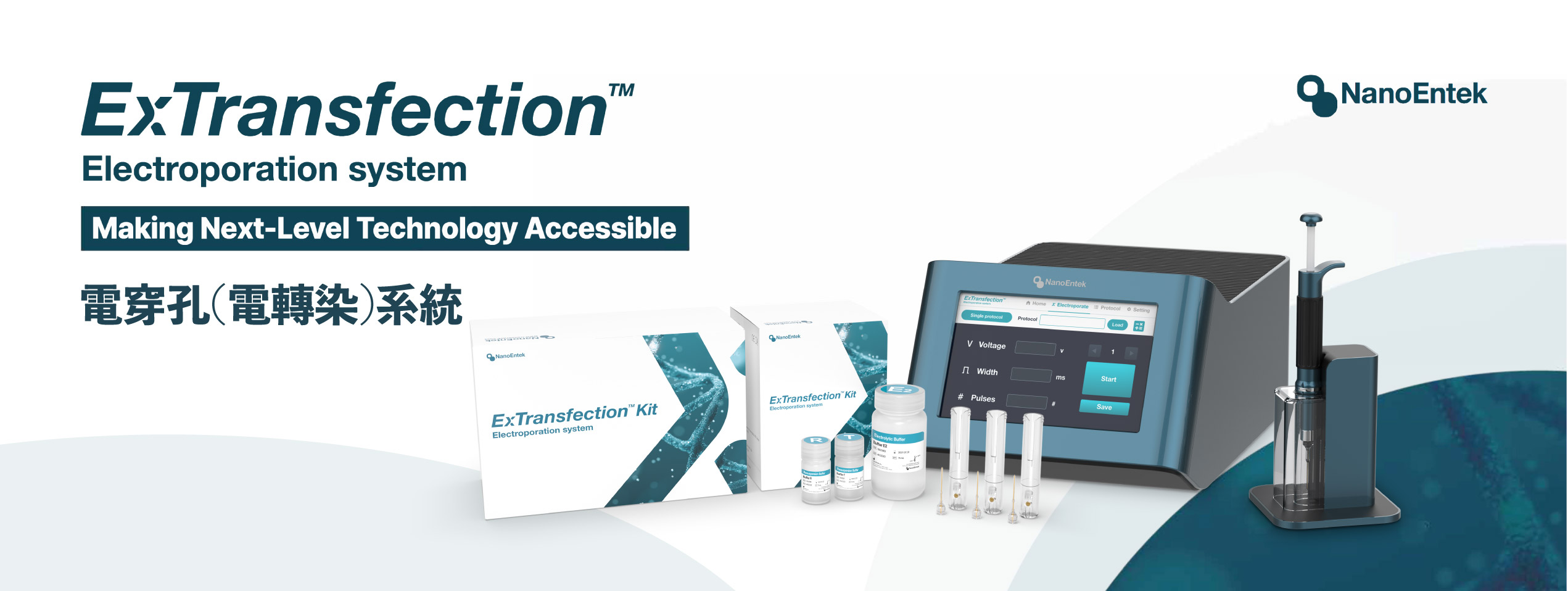
NanoEntek developed microporation technology to overcome the limitations of traditional electroporation methods using cuvettes. We are proud to introduce the ExTransfection™, an innovative pipette-type electroporation system that dramatically improves transfection efficiency.
The core of microporation technology lies in its use of a capillary-type electric chamber, replacing the conventional cuvette. This breakthrough maximizes the gap size between electrodes while minimizing the electrode surface area, significantly enhancing both transfection efficiency and cell viability. The increased electrode gap ensures a more uniform electric field within the capillary, further improving transfection performance.

The ExTransfection™ is a cutting-edge, benchtop electroporation device featuring a single electroporation chamber within its pipette tip. With precise electrical pulses, it efficiently delivers nucleic acids, proteins, and siRNA into all mammalian cell types while maintaining high cell viability.
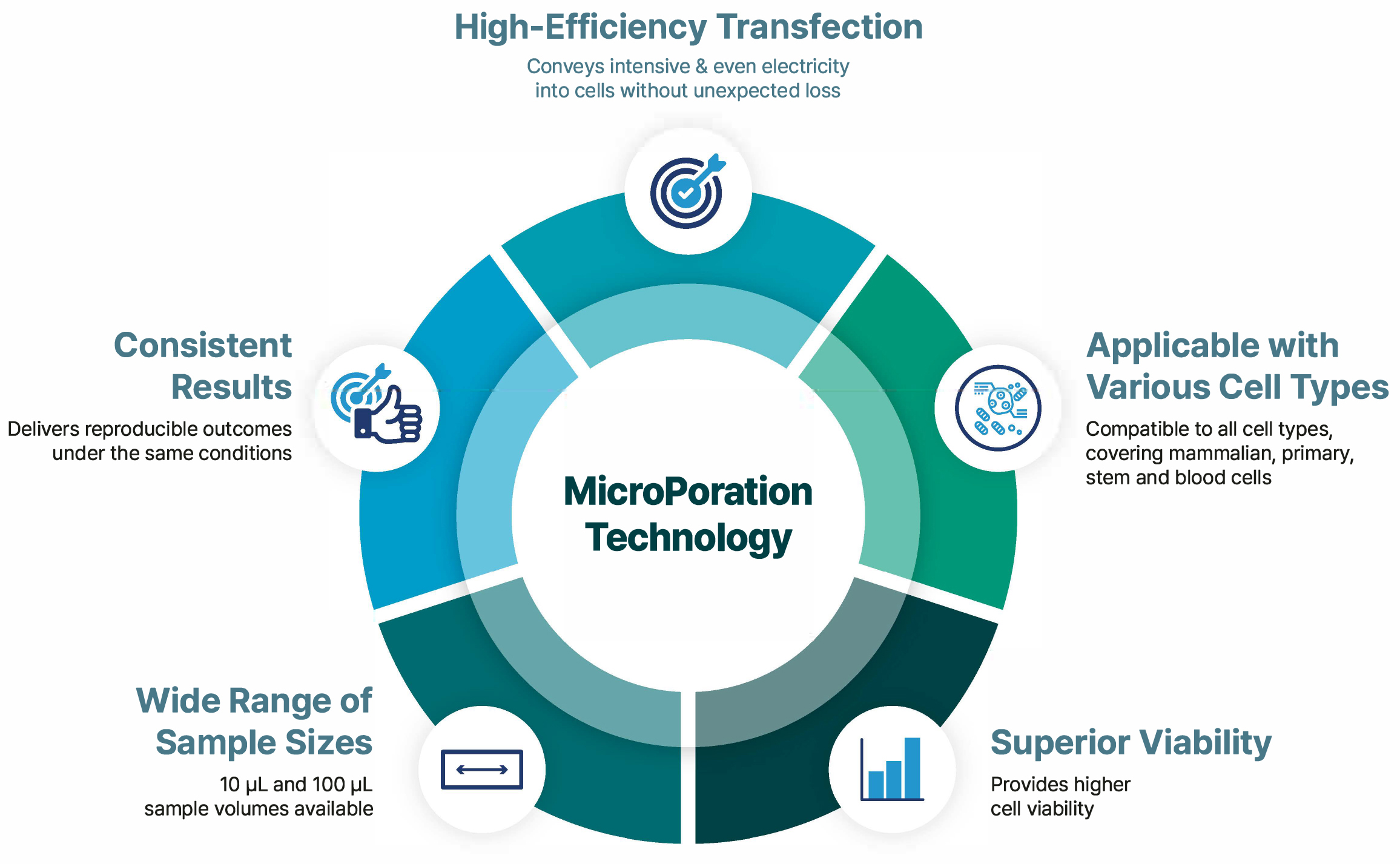
The transfection efficiency of microporation has always been reliable. Various cell lines have been extensively tested with GFP gene transfection, and their efficiencies were analyzed using fluorescence microscopy and flow cytometry.
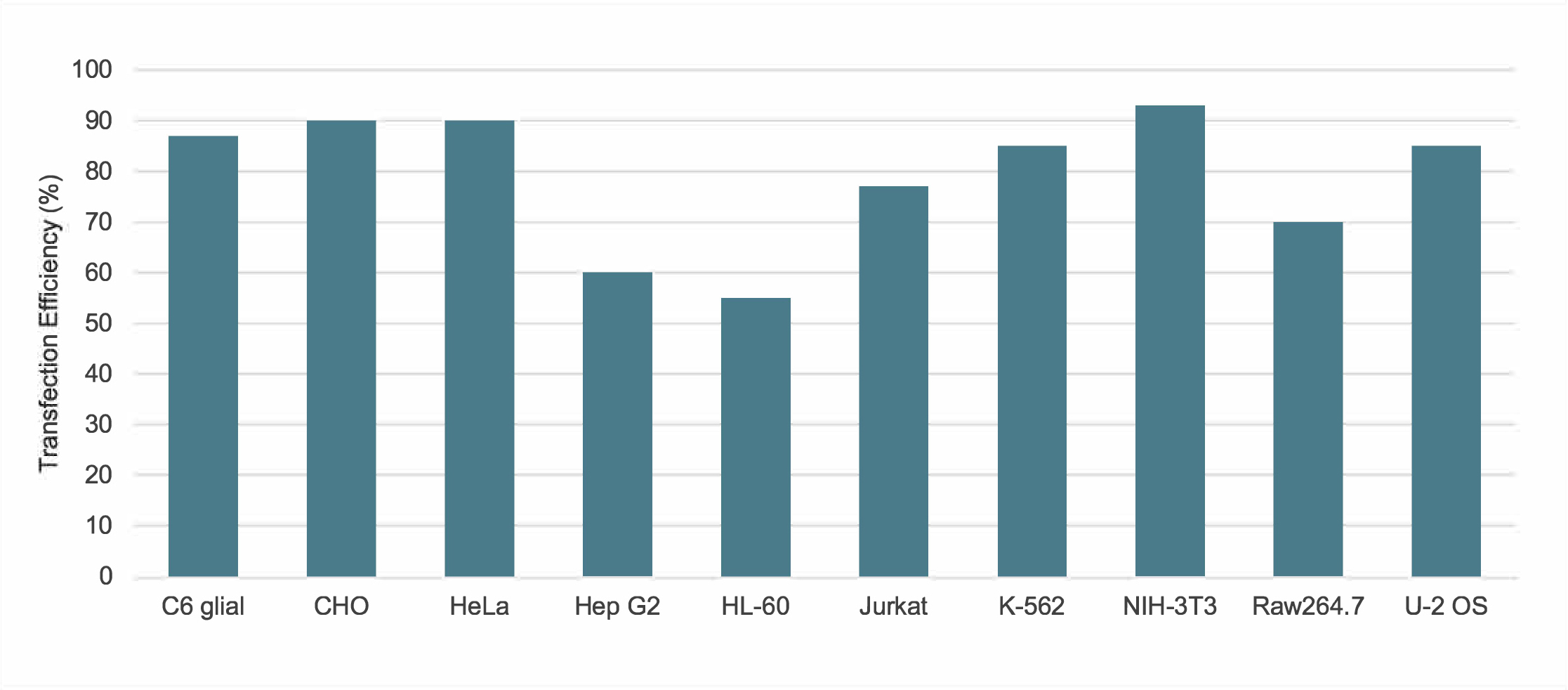
Primary cells are widely recognized as the ideal material for animal cell research due to their physiological similarity to live animals. However, the transfection of genetic material into primary cells has long been a significant challenge. The ExTransfection™ consistently delivers successful transfection results across various primary cells.
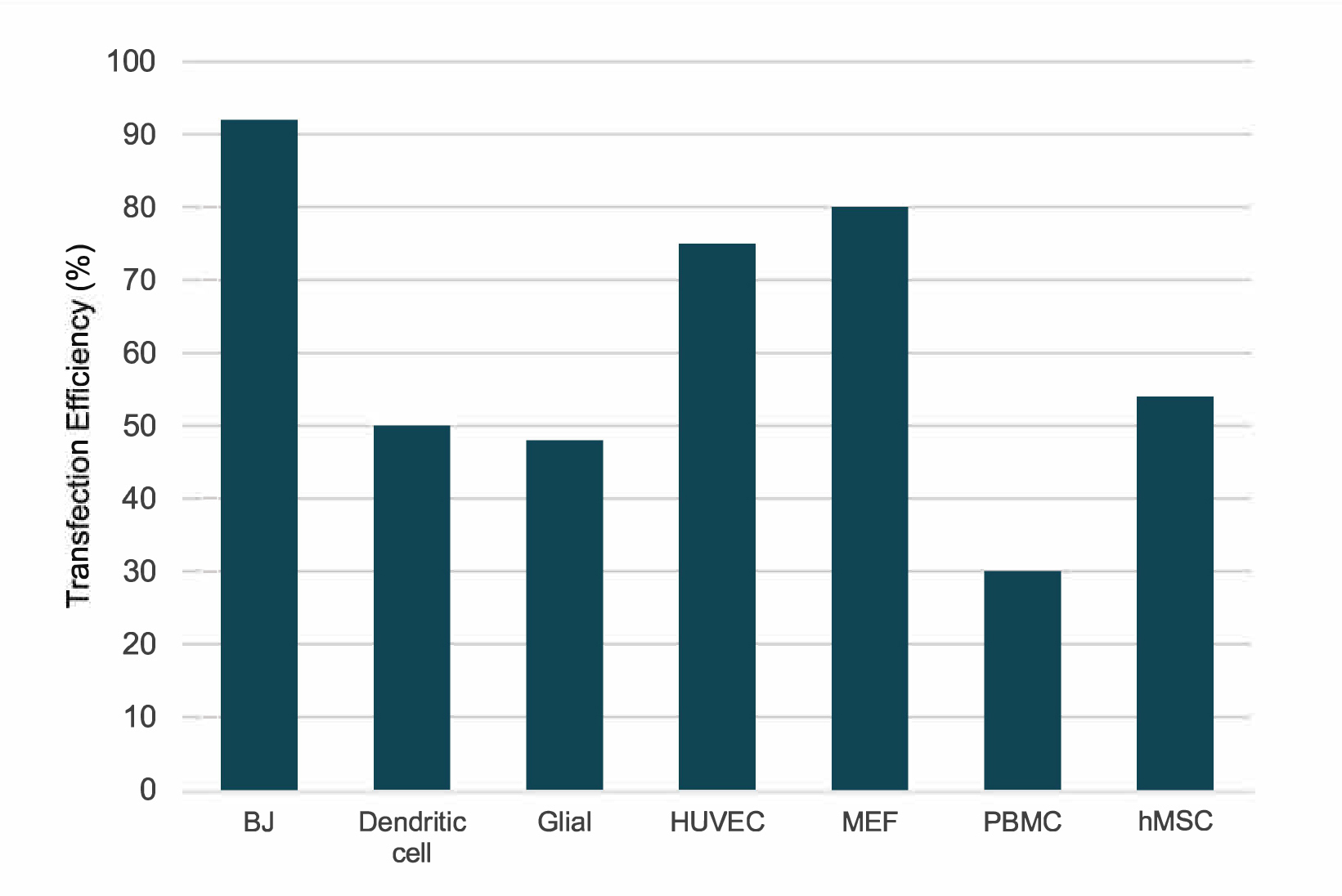
The ExTransfection'™ Electroporation System delivers cutting-edge performance and reliability for genome editing applica-tions, including CRISPR/Cas9 workflows. With unparalleled efficiency and precision, the ExTransfection'™ simplifies complex gene editing protocols, enabling researchers to achieve exceptional results across a wide range of cell types.
Achieve up to 90% transfection efficiency across diverse cell types, including primary, stem, and hard-to-transfect cells.
Intuitivethree-step protocol with single buffer simplifies electroporation for CRISPR ribonucleoproteins (RNPs), plasmids, and other nucleic acids.
Optimize electroporation parameters freely or utilize pre-programmed protocols tailored for CRISPR workflows. (1) Jurkat cell: 1,600V, 10ms, 3 pulses (IDT Alt-R CRISPR-Cas9 system, ThermoFisher TrueCut Cas9 Protein V2, STEMCELL CRISPR-Cas9 complex system) (2) HEK293 cell: 1,200V, 10ms, 3 pulses (GenScript Cas9 system)
Handle wide variety of cell samples ranging from 10,000 to 10 million cells per reaction. Minimized sample loss during transfer with biologically compatible pipette tips.
Researchers worldwide trust the ExTransfection'™ for its consistency and reliability in demanding CRISPR workflows. The ExTransfection'™ has been successfully employed in CRISPR/Cas9 experiments to:

The ExTransfection™ is a highly efficient tool for gene editing, achieving a high gene knockout percentage and enabling important analyses such as double gene knockout, surface markers, transcription factors, and intracellu-lar sensors. Through this, it allows for precise analysis of gene functions in immune cells, making a significant contribution to immunological research and therapeutic development.
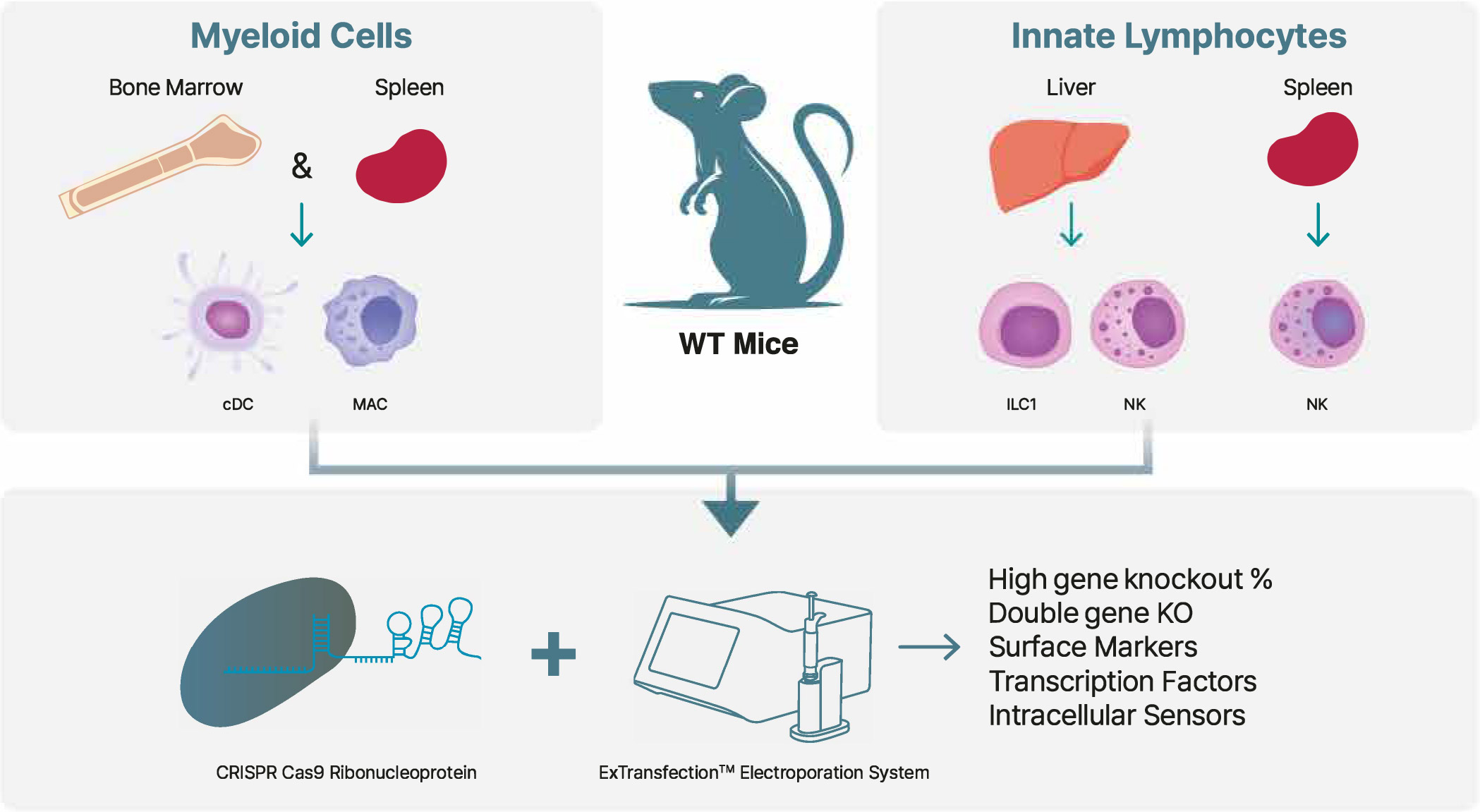
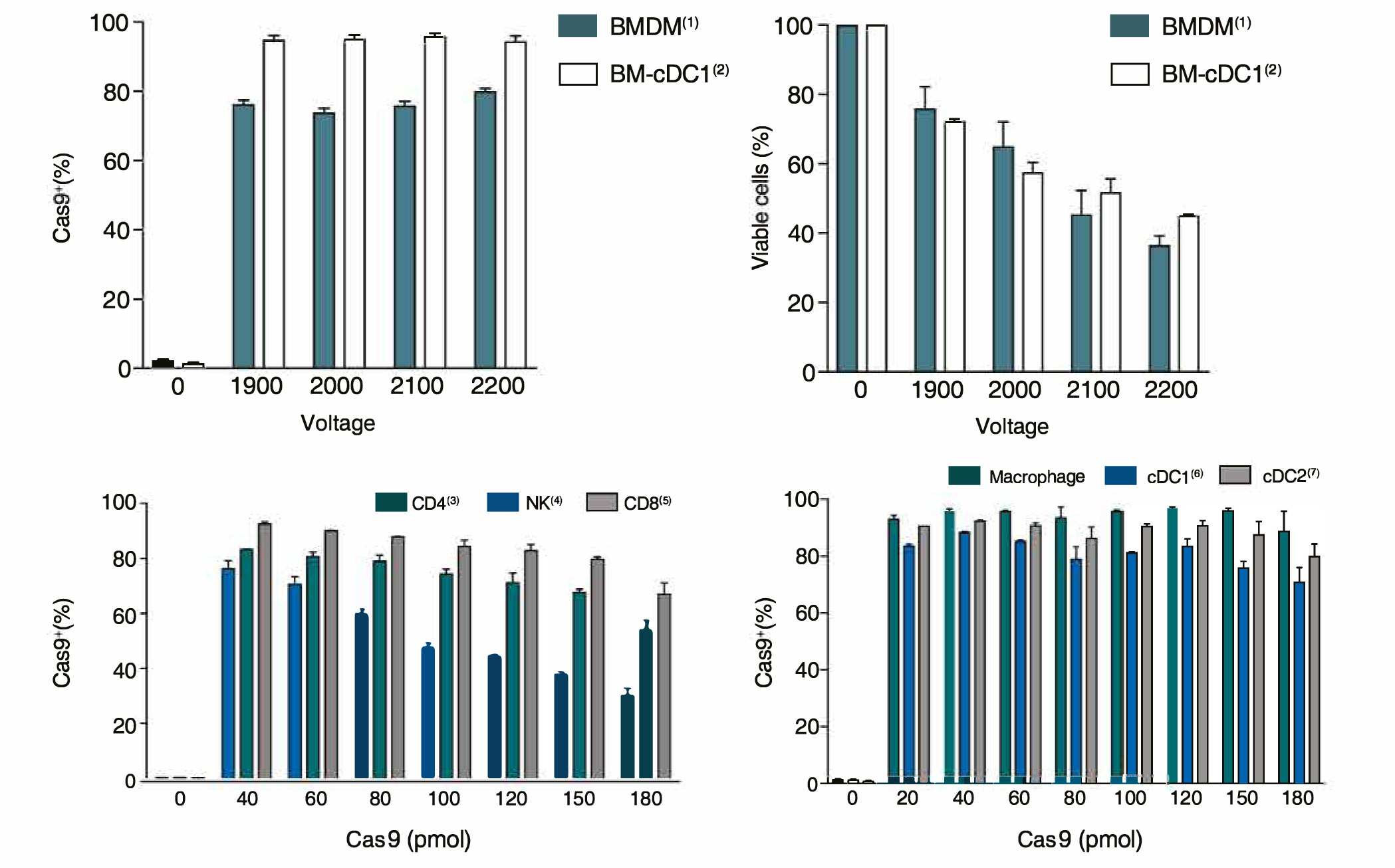
The ExTransfection™ makes it easy to optimize Cas9 delivery efficiency in immune cells. It provides high performance and flexibility for adjusting Cas9 protein delivery under different electrical conditions, cell types, and concentrations.
(1) BMDM: Bone Marrow-Derived Macrophage, (2) BM-cDC1: Bone Marrow-Derived Conventional Dendritic Cell 1, (3) CD4: Helper T Cell, (4) NK: Natural Killer Cell, (5) CD8: Cytotoxic T Cell, (6) cDC1: Conventional Dendritic Cell Type 1, (7) cDC2: Conventional Dendritic Cell Type 2
Reference:
Riggan L, Hildreth AD, Rolot M, et al. CRISPR-Cas9 Ribonucleoprotein-Mediated Genomic Editing in Mature Primary Innate Immune Cells. Cell Rep. (2020).
| Reaction volume | 10 µL or 100 µL |
|---|---|
| Cell concentrations | 5 × 104 – 5 × 105 cells for 10 µL tip; 5 × 105 – 5 × 106 cells for 100 µL tip |
| Pulse voltage | 500 – 2,500 V |
| Pulse width | 1 – 100 ms |
| Number of pulses | 1 – 10 |
| User interface | 8 inch touch screen |
| Electrical rating | 100 – 240 VAC, 4.0 A, 50/60 Hz |
| Electrical input | 24 VDC, 7.5 A, 180 W |
| Device weight | 6 kg |
| Device dimensions | 251.6 (W) × 383.4 (D) × 185.1 (H) mm |
NESCT-EXT-001EN (V.O.O)
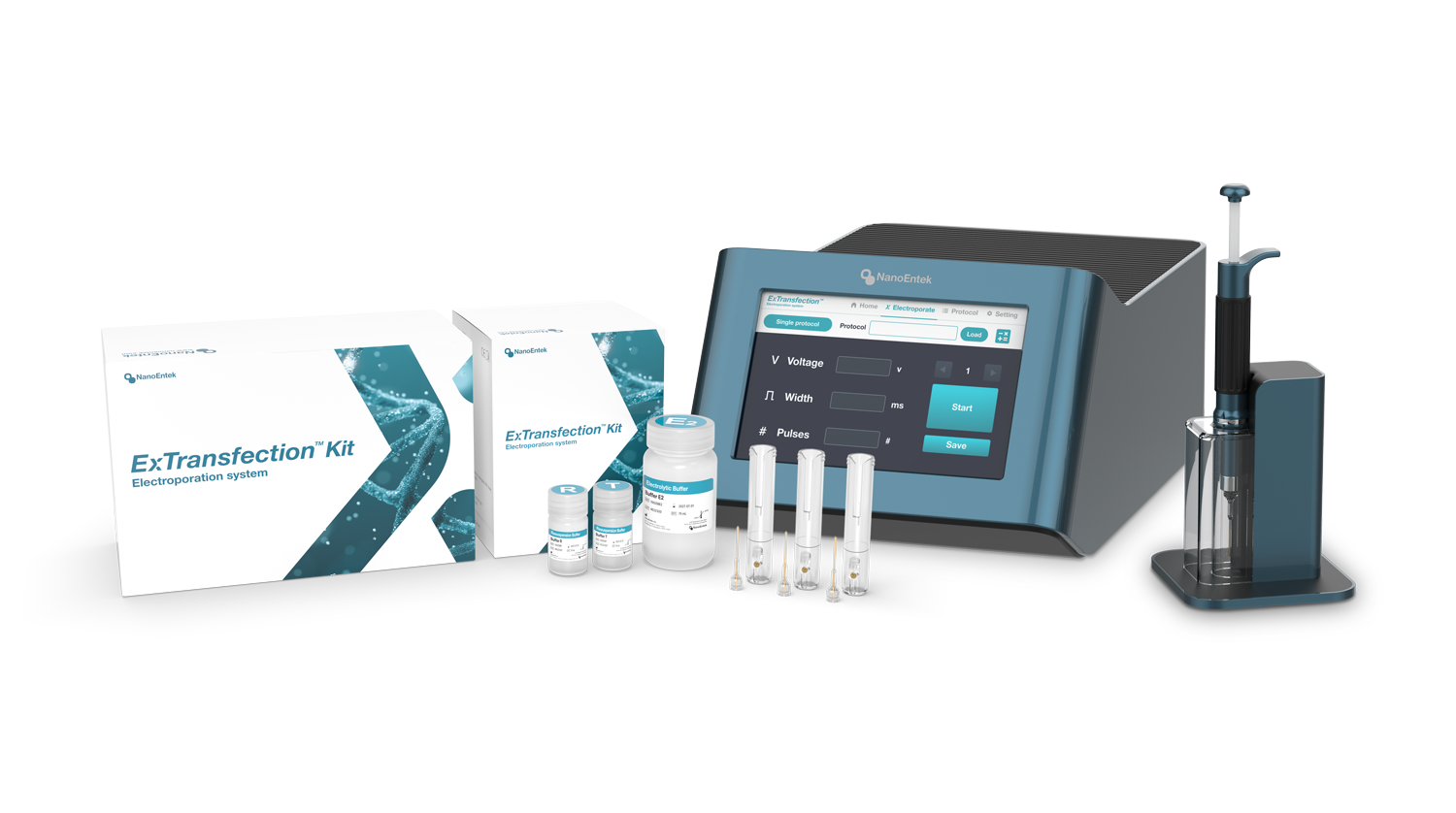
| Cat. No | Product | Contents |
|---|---|---|
| ExTransfection™ Device and accessories | ||
| EXT1000 | ExTransfection™, Electroporation System | Main device, Pipette, Pipette Station |
| EXT1000P | ExTransfection™ Pipette | ExTransfection™ Pipette (1 ea) |
| EXT1000PS | ExTransfection™ Pipette Station | ExTransfection™ Pipette Station (1 ea) |
| Consumables | ||
| EXT1025K | ExTransfection™ 10 µL Kit (25 × 2 reactions) |
Resuspension buffer R (1 ml) Resuspension buffer T (1 ml) Electrolytic buffer E (75 ml) Disposable tip (10 µL, 25 tips) ExTransfection™ tube (5 ea) |
| EXT10025K | ExTransfection™ 100 µL Kit (25 × 2 reactions) |
Resuspension buffer R (10 ml) Resuspension buffer T (10 ml) Electrolytic buffer E2 (75 ml) Disposable tip (100 µL, 25 tips) ExTransfection™ tube (5 ea) |
| EXT1096K | ExTransfection™ 10 µL Kit (96 × 2 reactions) |
Resuspension buffer R (1 ml, 3 ea) Resuspension buffer T (1 ml, 3 ea) Electrolytic buffer E (150 ml, 2 ea) Disposable tip (10 µL, 96 tips) ExTransfection™ tube (20 ea) |
| EXT10096K | ExTransfection™ 100 µL Kit (96 × 2 reactions) |
Resuspension buffer R (30 ml) Resuspension buffer T (30 ml) Electrolytic buffer E2 (150 ml × 2 ea) Disposable tip (100 µL, 96 tips) ExTransfection™ tube (20 ea) |
| EXT50T | ExTransfection™ Tube | ExTransfection™ tube (5 ea, 10 packs) |
 * Available worldwide (except in the USA). For research use only. Not for use in diagnostic procedures.
* Available worldwide (except in the USA). For research use only. Not for use in diagnostic procedures.